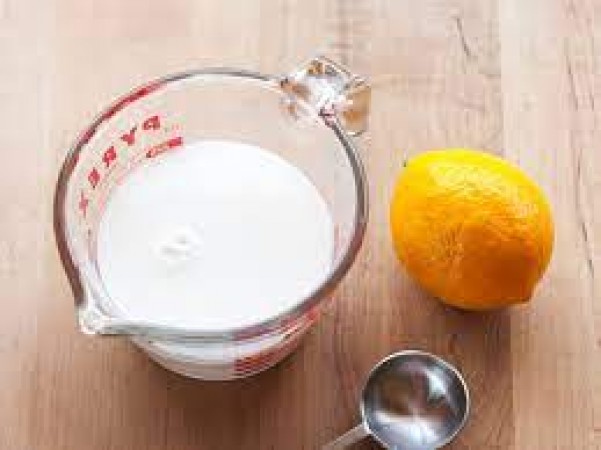
Have you ever wondered why your milk curdles, forming unsightly lumps that can ruin your culinary masterpiece? While lemon is a well-known culprit, there are other intriguing factors at play. Let's dive into the fascinating world of milk chemistry and explore what else can lead to this curious phenomenon.
When lemon juice is introduced to milk, its acidity disrupts the milk proteins. The most prominent protein affected is casein, which undergoes a process called denaturation, resulting in the formation of curds.
Similar to lemon juice, vinegar contains acetic acid that can curdle milk. This acid interacts with the proteins, causing them to unfold and bind together, forming clumps.
Yogurt is a fermented milk product containing live bacteria. These bacteria produce lactic acid, which lowers the pH of the milk, leading to curdling. It's like a microscopic dance party in your dairy!
Sour cream's tanginess is attributed to lactic acid bacteria. When added to milk, it introduces more acidity, triggering the curdling process.
Cultured buttermilk is rich in lactic acid bacteria, just like yogurt. As these bacteria proliferate, they create an acidic environment, causing the milk to curdle.
Tomatoes walk a fine line between acidity and alkalinity. The acid in tomatoes can curdle milk, but the alkaline nature of ripe tomatoes may counteract this effect. The outcome depends on the tomato's ripeness and the overall pH of the dish.
Certain alcoholic beverages, particularly those with high acidity, can curdle milk when mixed. This is due to the alcohol destabilizing the proteins in the milk.
Extreme temperatures, both hot and cold, can cause milk to curdle. Rapid temperature changes can destabilize the proteins, leading to curdling.
Spoiled or contaminated milk is a breeding ground for bacteria. When these bacteria multiply, they produce acids that curdle the milk. Proper storage is essential to prevent spoilage.
Enzymes present in certain foods, like fresh pineapple and figs, can curdle milk. These enzymes interact with the proteins, causing them to coagulate.
While salt alone won't curdle milk, it can influence the curdling process. Salt affects the solubility of proteins, potentially altering the texture of the curds.
Foods rich in protein, such as certain grains and legumes, can curdle milk due to the interaction between their proteins and those in the milk.
Adding milk to certain cereals can result in curdling. This is often due to the combination of acidity in the cereal and the natural acidity of milk.
The acidity in coffee can curdle milk upon contact. The temperature difference between hot coffee and cold milk can exacerbate this reaction.
While baking soda is alkaline and can neutralize acidity, excessive use can lead to curdling. It's a delicate balancing act between alkalinity and acidity.
Beyond lemon and tomato, other fruit juices can curdle milk. Citrus fruits, in particular, contain acids that can induce curdling.
Eggs, when added to hot milk, can contribute to curdling due to the proteins in the egg coagulating. Proper tempering techniques can prevent this.
Low-quality or improperly processed milk is more prone to curdling. Ensuring the freshness and quality of your milk can mitigate the risk of spontaneous curdling.
Protein powders, often derived from dairy, can curdle when mixed with milk. This is due to the interaction of different protein sources.
Understanding these diverse causes of milk curdling allows you to navigate the culinary landscape more effectively. By adjusting recipes and being mindful of ingredient combinations, you can avoid unintended curdling and ensure a smooth and delightful culinary experience.
In conclusion, while lemon is a prominent player in the curdling game, an array of factors, from acidity to temperature, can influence the fate of your milk. Embracing this knowledge empowers you to create culinary masterpieces with confidence, steering clear of unexpected curdling conundrums.
People of this zodiac sign can see changes in family life today, know your horoscope
People of this zodiac sign are going to be busy with household work today, know your horoscope
People of these zodiac signs will be busy in household work today, know your horoscope...